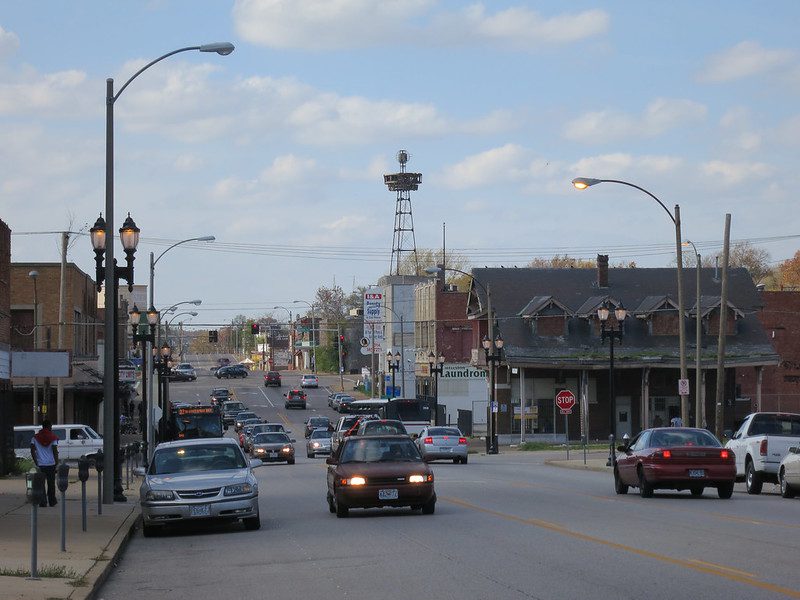
Photo by John Nuttall for flickr, CC BY 2.0
We’re all familiar with the benefits of vacations. They keep us healthy and happy. They give us time to spend with our families and friends. They’re fun!
But can we also leverage them to further our community building work when we’re not in the office?
I don’t mean working while on vacation. I’m talking about a real vacation—or at least what happens when you’re not checking email, joining in on that indispensable conference call, or tending to an emergency.
Here are some ideas about how to meet the double bottom line of vacationing: time off that pays off for our communities as well as ourselves and our families.
First, let’s look at our ambivalence about vacations. According to the most recent Bureau of Labor Statistics survey, about three-fourths of the American workforce is entitled to paid vacation time. On average, we receive 12 to 22 vacation days, depending on how many years we’ve been at our jobs. According to Expedia’s Vacation Deprivation Study, that’s considerably less vacation than our counterparts in other countries who take off as many as 30 days a year.
More striking, the study suggests many of us don’t actually take advantage of the vacation days we have coming to us.
This ambivalence about taking time off may be more pronounced in the community building field. We love our jobs so our work is our leisure. The nonprofit sector is becoming increasing aware of the value of time away from the office for balancing life and work, preventing burnout, enhancing creativity, and sustaining commitment to the cause. Yet many of us still struggle to justify time off.
Paying attention to the double bottom line of vacations may help us see time off as an investment in our community-building missions as well as our own rest and restoration.
Here are some ideas for meeting the double bottom line of a good vacation. They call attention to what we notice, how we connect, and what we give of ourselves.
Exploring New Places:
Adopting a discovery mindset while touring new cities or seeing how neighborhoods in our home towns have changed can help us notice what we like about them. We can also explore “best practices” we’ve only heard or read about. While there, we can ask ourselves: What makes these places inviting and interesting? This can serve as a source for new ideas for our own communities and organizations.
Connecting with New People:
Talking with people we meet is a chance to learn from the insider’s expertise on daily life. Their accounts about who builds, manages, and finances their homes or how youth transform themselves while transforming their neighborhoods say a lot about how their communities work. Their responses to what we tell them about our favorite projects can invite us to revisit our assumptions or remember why we believe in them. With advance planning, we can invite a colleague for an after-work drink or meal to explore topics we wouldn’t get to discuss at a conference or workshop. What we hear can spark new ideas for our organizations to pursue, whether we are developers, advocates, or organizers.
Feeling Vulnerable and Different:
The experience of voluntary homelessness and temporary cultural dissonance is certainly not the same as living without stable housing or as an immigrant in inhospitable U.S. cities. Yet for those of us without these firsthand experiences, being away from the familiarity of home can expose us to a little of the uncertainty, anxiety, and exclusion, at least as a starting point for deeper conversations about cultivating cultural competencies. Conversely, paying attention to what it feels like to be fully rested, nourished, and pampered may point us to ways to broaden our conception of what communities need.
All of these connections can expand our sense of belonging to a larger tribe of people who care about strengthening communities.
Investing in Communities:
Even when our vacations aren’t expensive, we typically spend money. Choosing where we go, where we stay, what we buy, and who serves our meals can be an investment in community economic development. We can frequent establishments that pay fair wages, allow workers to organize, and share profits with workers and residents. We can buy locally produced products and eat local food (while enjoying what would be exotic at home). Telling people why we’ve made our choices can invite others to magnify the impact.
Horizon-Expanding Reading:
Each of these ideas for meeting the double bottom line work for staycations as well. But the places and people we encounter in a good novel—whether read on a near or distant beach—can also inspire new ideas and expand our sense of commonality with others. We can venture into neighboring fields to discover potential points for connection. Urban history can show us how far we’ve come and allow us to rediscover strategies that might work again today. Reading philosophy prompts deeper thinking about our ethical dilemmas and contributions to justice.
Questions for the Way Home:
We can also pay attention to our vacationing selves. We can ask: How can we maintain the exploring mindset in our interactions with colleagues and constituents? What energized us when we were tired? What made us laugh when things didn’t go as planned? How can we treat ourselves more generously and lightheartedly when we’re back to our regular routines?





How true! We find it difficult to disconnect from our electronic umbilical cords. It’s important to do this as it allows for more creative problem-solving. When you place yourself in a new environment you begin to see with new eyes.